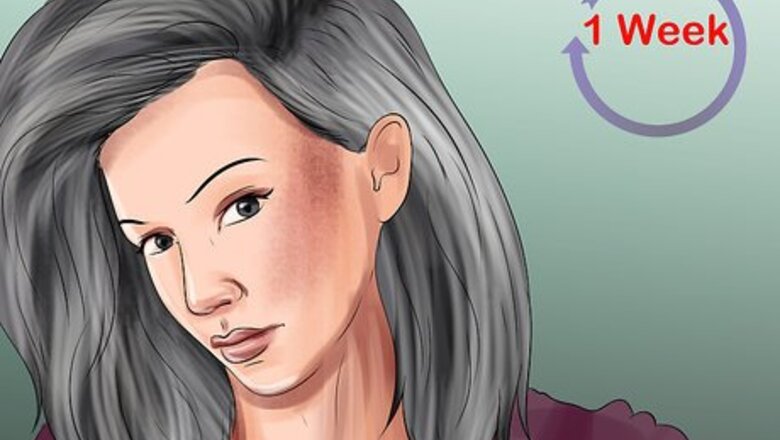
views
Washing and Conditioning Your Hair
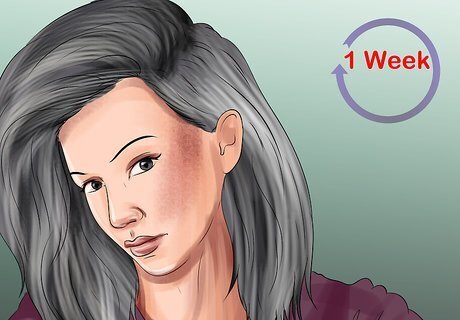
Wait 1 week after dyeing your hair silver to wash it again. If you're trying to maintain silver hair that isn't natural, shampoo your hair immediately after bleaching it and condition your hair right after coloring it. After this initial shampooing and conditioning, leave your hair alone for 1 week so that it can recover and replenish any lost oils. If you wash your hair immediately after coloring your hair, then you risk dryness or breakage.
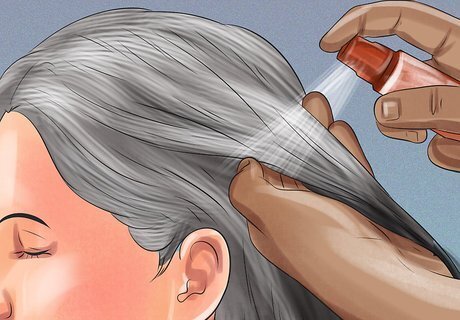
Pre-condition your hair before washing it. Apply coconut oil to your hair, making sure to distribute it evenly. Leave it in for 1 hour, then wash it out with shampoo. You can also use a hair mask instead, as long as it can be used on dry hair. Leave the mask on for 5 minutes, or the time recommended on the bottle. For best results, use virgin, cold-pressed, un-refined coconut oil. Cover your hair with a shower cap to keep your surroundings clean.
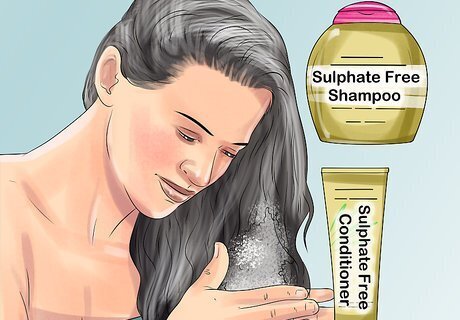
Use color-safe, sulfate-free shampoos and conditioners. Focus the shampoo on your roots and scalp, and the conditioner on the mid-lengths and ends of your hair. Remember to leave the conditioner in your hair for 1 to 2 minutes before rinsing it out. Sulfates are a common ingredient in shampoos and conditioners. They can make your hair feel dry and fade hair dye.
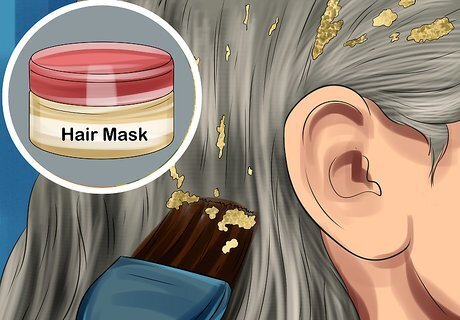
Deep-condition your hair 1 to 2 times a week with hair masks. Choose a mask meant for color-treated hair. Wash your hair with shampoo, then rinse it out. Apply the mask to your hair while it is still wet. Wait 3 to 5 minutes, then rinse the mask out. Use a sulfate-free hair balm if your hair is naturally gray. If you can't find a hair mask meant for color-treated hair, look for a hydrating or repairing one. Check the ingredient label to ensure that it is free of sulfates.
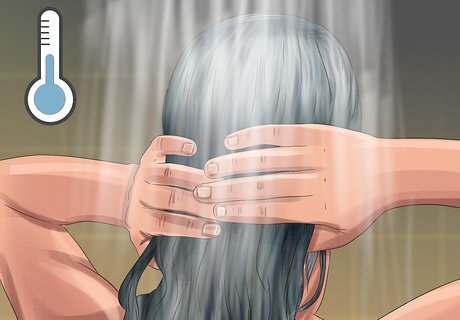
Use cool or lukewarm water to wash and rinse your hair. Hot water is very damaging to hair, and even more so on dyed hair. It can also cause your hair color to fade faster. You can make your hair color last longer by using cool to lukewarm water to wash and rinse it. The lower temperature will also help your hair appear sleeker and smoother. Rinse your conditioner out with cool water to seal the cuticle and lock in moisture.
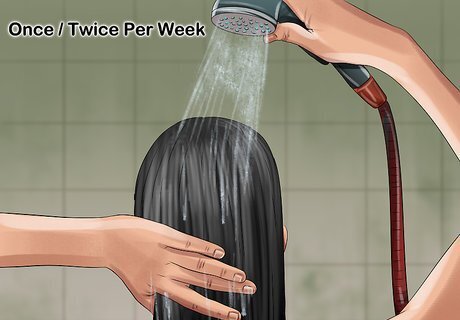
Limit washing your hair to once or twice per week. Gray hair dye fades faster than most, so the less often you wash your hair, the longer your color will stay. If your hair is not very oily, wash it once per week. If your hair tends to get very oily, wash it no more than twice per week. Use dry shampoo in between washes if your hair starts to look oily and dirty.
Protecting Your Hair from Heat Damage
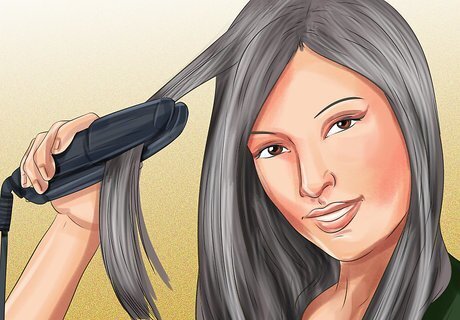
Limit the heat styling to keep your hair healthy and the color vibrant. Let your hair air dry whenever possible, and learn to embrace your hair's natural texture. Heat styling not only damages hair, but it can cause your hair color to fade faster. Using no-heat methods when drying and styling will lead to healthier hair and a longer-lasting dye job.
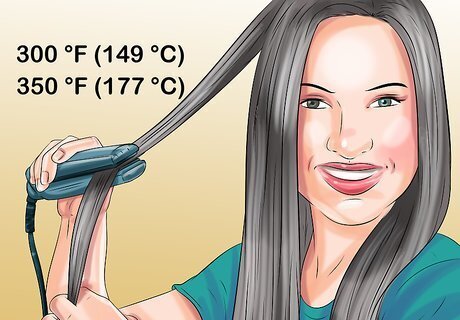
Use a low heat setting when you do heat-style your hair. This includes hair dryers, curling irons, and flat irons. If your curling iron or flat iron has an adjustable temperature range, use a heat setting between 300 °F (149 °C) and 350 °F (177 °C), or between 250 °F (121 °C) and 270 °F (132 °C) if your hair is especially fine. Make sure that your hair is completely dry before you straighten or curl it.
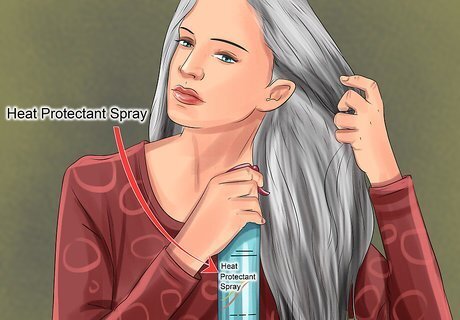
Always use a heat protectant when heat-styling your hair. Apply the heat protectant to your hair while it is still wet. If you are using it on dry hair, make sure that you let the product dry first, otherwise you risk baking it into your hair. After you have applied the product, you can dry, curl, or straighten your hair as usual. Make sure that you apply the heat protectant all over your hair, not just the ends or the roots. Be generous with the application. Heat protectants come in many forms: spray, serum, cream, etc. Look for a label that says "heat protectant" or "heat protection."
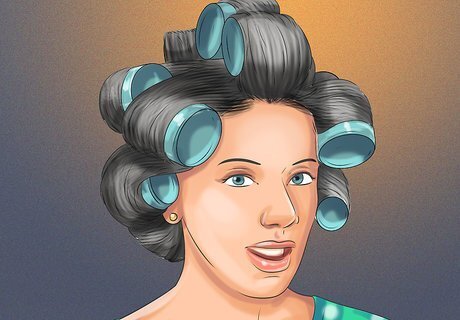
Try no-heat methods to curl your hair. These methods take longer than using a curling iron, but they are much kinder to your hair. Get your hair wet, then put it in foam hair rollers. Let your hair dry, then take the rollers out. Use your fingers to loosen the curls, but do not brush them. Try putting your rollers in just before going to bed and letting your hair dry in the rollers overnight. You can also put your hair up into a sock-bun or braids instead.
Keeping the Color Consistent
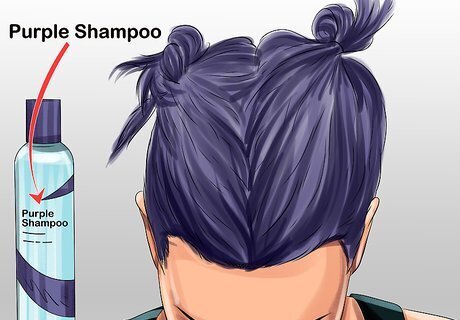
Use silver, purple, or gray color-depositing shampoos. Use purple shampoo if you notice yellow tints in your hair, and silver or gray shampoo when the color starts to fade. Get your hair wet, then apply the shampoo. Leave it in for the time recommended on the label (typically 5 to 30 minutes), then rinse it out. Leave the shampoo on for only 5 minutes the first time that you use it to get a better idea of how strong it is on your hair. An alternative to purple shampoo is blue shampoo. It is better suited to silver or gray hair, and may even be labeled as such. You can purchase color-depositing shampoos as your local beauty supply store. Look for a purple shampoo that's moisturizing—some are clarifying shampoos, but those will dry out your hair over time.
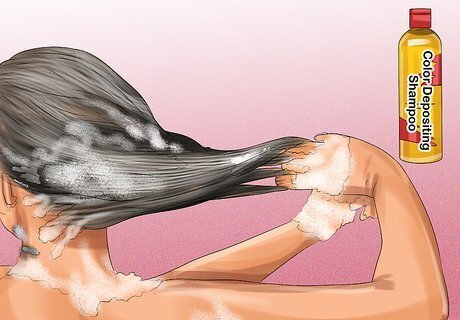
Alternate between color-safe products and color-depositing products. If you use color-depositing products too often, you might end up changing your hair color. Use your color-safe shampoo/conditioner once or twice a week. Every 2 to 3 weeks, use a color-depositing shampoo/conditioner. For example, using purple shampoo too often, such as every day, can make your silver hair look like it has a purple tint. Don't be afraid to use different kinds of purple shampoo. There are ones that are more like purple dye, and ones that are more like shimmery conditioner. You can even mix them together to create a unique blend.
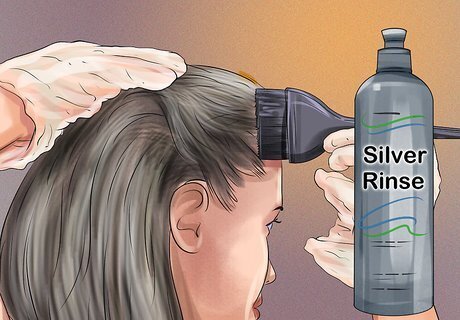
Use a temporary gray or silver rinse to even out your hair color. These products wash out, so you should apply them to your hair after you have finished washing it, while it is still damp. Rub the gray or silver rinse into your hair, then let it air dry or speed the process up with a hairdryer. This product can stain. Use an old towel when towel-drying your hair. If you don't find the applicator bottle convenient to use, try a spray bottle instead.

Do a toning treatment if color-depositing products aren't enough. It would be best to do this at a salon, but you can do it yourself. If you are doing it at a salon, consider getting it done at the same time as your root touch-up. If you are doing it yourself, use a low-volume developer and a white or platinum toner. You can also do a bleach bath every 1 to 2 months. Get it done professionally at a salon, and be aware that it can be damaging.
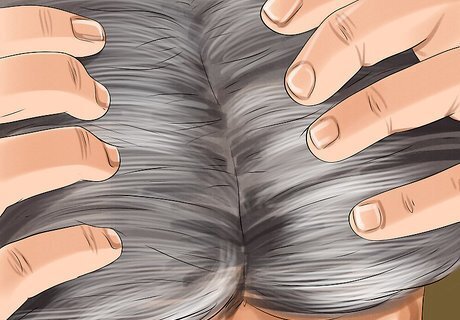
Re-touch your roots when they start to show. While the time between root touch-ups varies based on how quickly your hair grows, for most people it will be somewhere between 4 to 8 weeks. Since this requires a precise hand, it would be best to get it done professionally at a salon. If you cannot afford this, consider getting a friend or family member to help you. If you choose to enlist a friend or a family member, make sure that they have some experience with bleaching and dyeing hair.


















Comments
0 comment